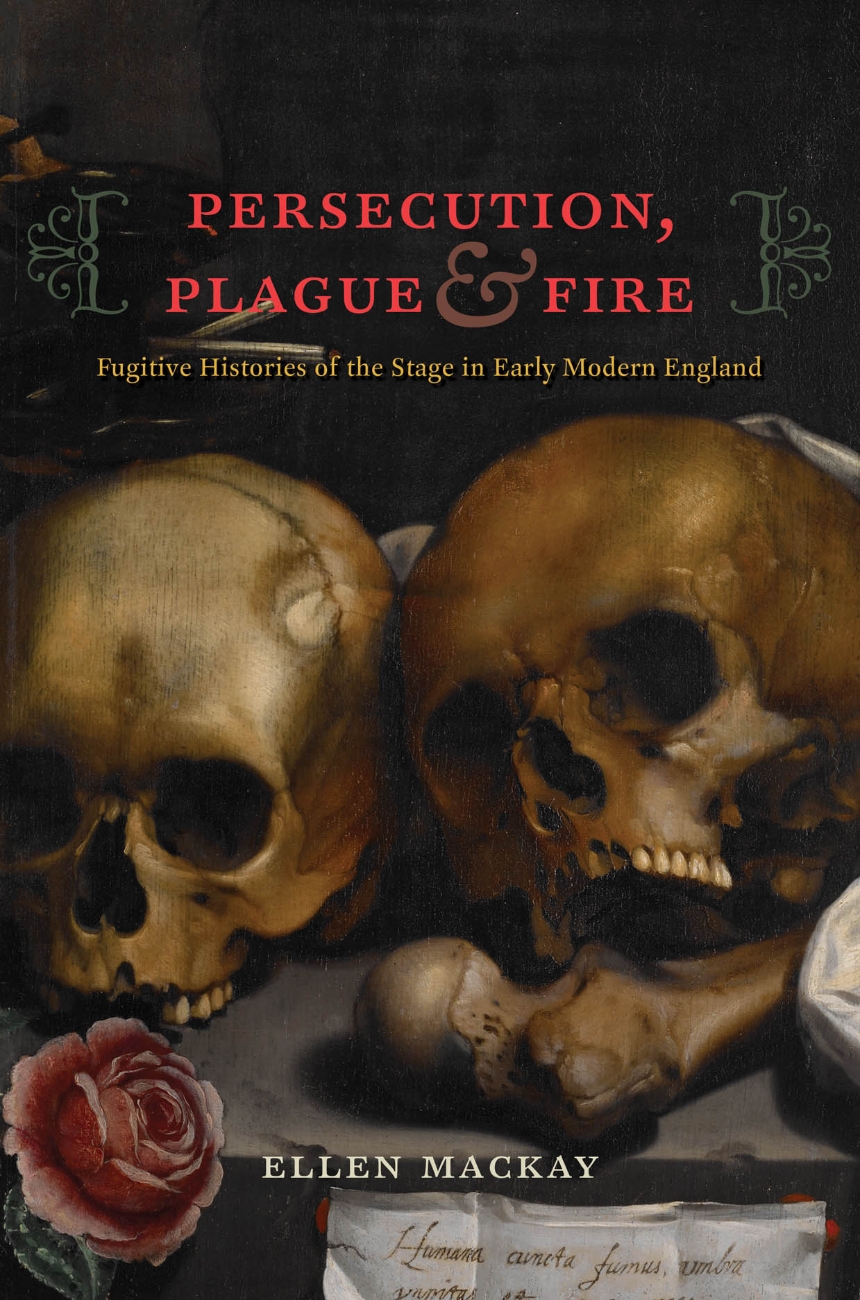Persecution, Plague, and Fire
Fugitive Histories of the Stage in Early Modern England
Persecution, Plague, and Fire
Fugitive Histories of the Stage in Early Modern England
Publication supported by the Bevington Fund
The theater of early modern England was a disastrous affair. The scant record of its performance demonstrates as much, for what we tend to remember today of the Shakespearean stage and its history are landmark moments of dissolution: the burning down of the Globe, the forced closure of playhouses during outbreaks of the plague, and the abolition of the theater by its Cromwellian opponents.
Persecution, Plague, and Fire is a study of these catastrophes and the theory of performance they convey. Ellen MacKay argues that the various disasters that afflicted the English theater during its golden age were no accident but the promised end of a practice built on disappearance and erasure—a kind of fatal performance that left nothing behind but its self-effacing poetics. Bringing together dramatic theory, performance studies, and theatrical, religious, and cultural history, MacKay reveals the period’s radical take on the history and the future of the stage to show just how critical the relation was between early modern English theater and its public.
256 pages | 9 halftones | 5 1/2 x 8 1/2 | © 2011
History: British and Irish History
Literature and Literary Criticism: British and Irish Literature, Dramatic Works
Reviews
Table of Contents
Introduction: The Theater as a Loaded Gun
The Hurt That Comes of Fooling
Aeschylus’s Ballistic Stage
PART I: THE RUINS OF ROME
1. The Theater as Persecution
Tragedy’s Guilty Creatures
England’s Conscience-Catching Theater
Rome’s Fatal Charades
2. Tyrannical Drama
The Dream of Theatrical Justice
Hamlet’s Show Trial
The King’s Immunity
The Widow’s Foregone Confession
Gertrude’s Uncaught Conscience
Orestes Redux
The End of Rome
PART II: THE FALL OF THE UNIFIED CHURCH
3. The Theater as Infection
The Toxic Middle Age
“The Theater and the Plague”
“The Sure Disease of Uncertaine Causes”
The Life of Performance
Not Quite Nothing
4. Stigmatical Drama
Some Symptoms of the Medieval Stage
“It is not words that shakes me thus”
The Plague in Art
“Look there, look there!”
PART III: THE APOCALYPSE TO COME
5. The Theater as Conflagration
The Eschatology of the Tudor Stage
The Theater’s Propensity for Burning
Raising the “Cry of Sodom”
Wielding the Crime of Sodom
Sodomy’s False Origins
6. Sodomitical Drama
The Sought Apocalypse
Remembering Lot’s Wife
The Stage’s Hymeneal Contract
The Impossible History of Theater Fires
The Mare Mortuum’s Infinite Stage
Afterword: On the Uncertainty of What Comes After
Bibliography
Index
